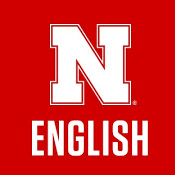English, Department of

Department of English: Faculty Publications
Document Type
Article
Date of this Version
5-2010
Citation
Modern Philology May 2010, Volume 107, Issue 4, pp. E101 - E104
Abstract
Histories of food have traditionally emerged out of the fields of structural anthropology, ethnology, and historical sociology. More recent scholarship has emphasized the idea of foodways, those networks by which foods are produced, prepared, and consumed within different food communities. Rather than seeing rituals of culture in food, such scholarship has instead sought to understand food in terms of a circulation of physical resources and values that involves questions of economics, ecology, biology, and ethnobotany. The first approach has tended, broadly speaking, to produce scholarship that is concerned with the ritual, symbolic, and social qualities to our acts of sustenance. The second, by contrast, has tended to be concerned with the physical and material character of those acts. Robert Appelbaum’s Aguecheek’s Beef, Belch’sHiccup, andOther Gastronomical Interjections seeks to integrate the alternatives implied by these two approaches. For Appelbaum, food exists precisely at the border between the symbolic and the material. Indeed, it is not simply that food is never just food. Instead, he argues, ‘‘although themateriality of life—the basis of human life in the human need for physical things—would seem to predominate in our relation with food, materiality, in fact, is endlessly consumed by the world of symbols’’ (9).
In this vast and often elegant survey, Aguecheek’s Beef offers readers an introduction to the varied textures of early modern culinary life. Its subject is food, but its appeal encompasses the aspects and qualities of the human condition that food itself brought to early modern Europe. The egg, the apple, baked meats, and ‘‘chickens hunter style’’ all make their appearances here (83), but Aguecheek’s Beef is not a culinary archaeology that would unearth the history of food in material terms. Insofar as it is through the texts, languages, and discourses of food that we apprehend this material reality, Appelbaum confirms his suggestion that food is itself a kind of language that crosses from the material to the meaningful.
Included in
Comparative Literature Commons, English Language and Literature Commons, Modern Literature Commons, Reading and Language Commons


Comments
Copyright (c) 2010 by The University of Chicago. Used by permission.